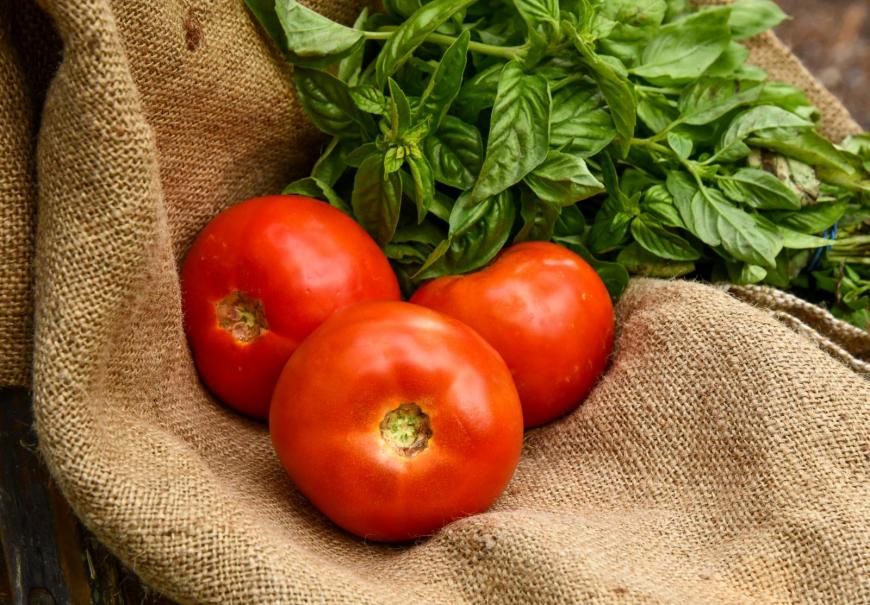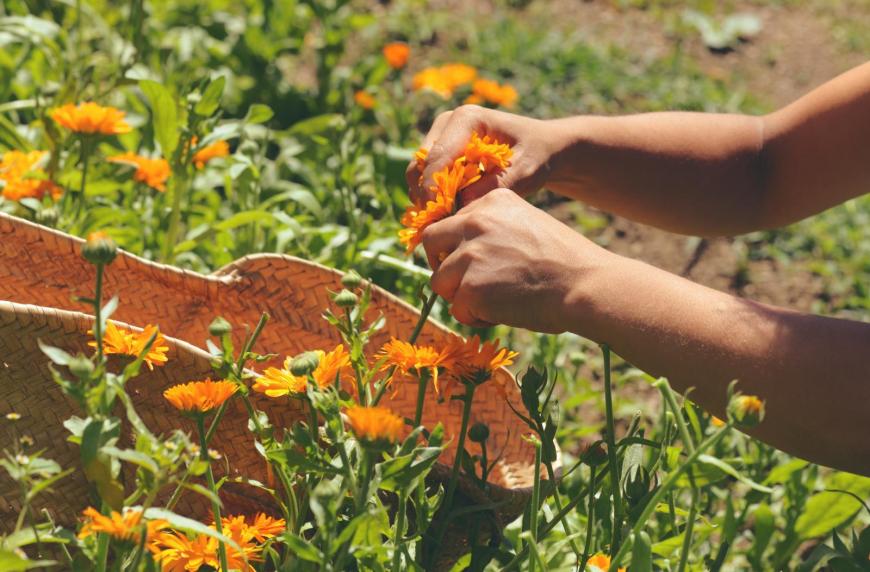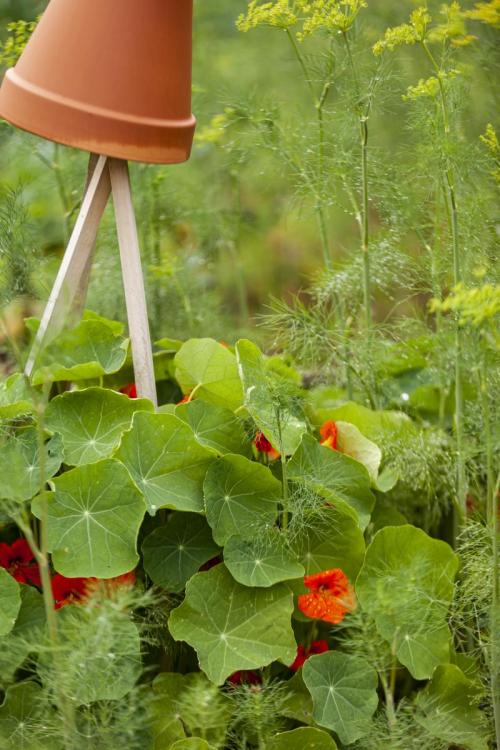
So what exactly are companion plants? Plants that keep you company? That sounds nice, and maybe they can do that too, but the term ‘companion plants’ refers to plants that are purposefully grown alongside another plant or crop in order to provide a beneficial service. That service might be protecting the crop from pests, attracting beneficial insects or increasing the crop’s health and productivity. Granted, the evidence for these plant pairings is largely anecdotal but like much gardening wisdom passed down through the generations, there are some things that really do seem to work. The trick as always is to experiment and see what works in your garden. And as the plants listed here are also deliciously edible - you’ve got nothing to lose by giving it go!
Here’s a selection of seven of my favourite companion plants. Some are herbs and some are edible flowers and I recommend including a few of these plants in every vegetable garden. Most can still be sown now or you might find friends or neighbours who have a couple of plants to spare.
With its highly fragrant leaves that can be harvested for salads and summer dishes, basil is a wonderful herb to grow and the perfect companion plant for tomatoes in the greenhouse. It can help to keep whitefly off of the tomatoes as they seem to find the basil plants tastier. If you grow the basil in pots, you can remove them from the greenhouse every few days to help keep the numbers of whitefly low. Some gardeners believe that the basil improves the flavour of the tomatoes and of course, basil and tomatoes go great together in the kitchen too, so planting them next to each other means you can harvest both at the same time.

Great for: Growing alongside greenhouse crops to control aphids.
Pair with: Tomatoes, aubergines, peppers.
When to sow: Late February (in propagators) to July. Plant out once the danger of frost has passed.
With its vivid blue, star-shaped flowers hanging in downward-facing clusters, borage is one of my favourite plants and an excellent companion plant for the vegetable garden. Bees love it and the edible flowers can be harvested and sprinkled over salads or frozen in ice cubes and added to summer drinks. Borage is also used as a companion plant for strawberries, with gardeners commenting that it improves the yield and even the flavour of the strawberries. It’s certainly a bee magnet so will do a great job of attracting insects to aid in the pollination of strawberries. Once you’ve introduced it to your garden, borage will self-seed freely and pop back up again each year.
Great For: Attracting pollinators.
Pair With: Strawberries.
When to Sow: Sow direct in the garden April-July.
Calendula is one of the all-round best companion plants and another of my favourites. It’s edible (sprinkle petals into a salad for a pop of yellow/orange colour), medicinal (calendula oil has wonderful skin healing properties and can be made into balms and creams) and it brightens up the garden no-end. I let calendula self-seed around the vegetable garden as it’s a great companion plant for a number of crops. The strong colour of calendula attracts hoverflies, lacewings and ladybirds, all of which are great natural predators for garden pests, and it attracts pollinators needed for insect-pollinated crops such as beans, cucumber, fruit and tomatoes. Note that calendula must not be confused with Tagetes (commonly called marigolds), another popular companion plant which is toxic if ingested.

Great For: Attracting beneficial insects.
Pair With: Carrots, chard, parsley, radish and tomatoes.
When to Sow: March-May and/or late August-September, undercover or direct into the garden.
These cut-and-come again chives taste like garlic and are a great culinary herb to use in the kitchen. They have decorative white flowers that pollinators love and are another helpful plant to have in the vegetable garden. Garlic chives grow and flower much later than ordinary chives so it’s a good idea to grow both and allow for a succession of chives right through to late Autumn. It’s often recommended to plant chives (as well as onions and garlic) among carrots so that their scent confuses the carrot root fly, a pest of carrot crops, that locates carrots with their keen sense of smell. Chives are also said to work well next to grapes, in order to repel aphids; apples to prevent scab disease; and roses to prevent black- spot. If that wasn’t reason enough to give them a go, the leaves can also be used to make a natural fungicide, sprayed on cucumber and courgette plants to help deal with powdery mildew.
Great for: Confusing pests and attracting pollinators.
Pair With: Carrots, grapes, apples and roses.
When to sow: Direct in the ground from April to August.
Hyssop is another attractive, aromatic and edible herb to grow in the vegetable garden. Although hyssop attracts bees and some butterflies, it is said to deter cabbage white butterflies and for this reason, is often planted amongst brassica plants.
Great for: Protecting brassicas from cabbage white butterflies, attracting pollinators.
Pair With: Brassicas (broccoli, brussel sprouts, cabbage, cauliflower, kale).
When to sow: Indoors Feb-April and plant out after the last frosts.
Quick-growing and edible nasturtiums are another favourite of mine. Trailing out of pots and raised planters, the leaves and flowers can be harvested for a colourful, peppery addition to salads. They attract a host of beneficial insects including ladybirds, lacewings, hoverflies and bees and when grown among brassicas, they act as a “sacrificial crop”, attracting cabbage white butterflies away from the brassica plants. Grown in the greenhouse they can help protect tomatoes and cucumbers against whitefly.

Good for: Deterring brassica pests and greenhouse whitefly.
Pair With: Brassicas, tomatoes and cucumbers.
When to Sow: Indoors, March-April and outdoors, May-July.
A useful annual culinary herb, summer savoury is commonly grown with broad beans to protect them from blackfly. It’s an easy herb to grow and tastes delicious paired with broad beans and runner beans. I love how plants that grow well together, often taste great together too!
Good For: Protecting beans from blackfly.
Pair with: Broad beans, runner beans.
When to sow: Undercover in March or direct sow April - July.
All of these herbs and flowers will make a wonderful addition to the vegetable garden and many of them will also self-seed freely and keep popping back up year after year. An abundant, healthy garden is naturally full of beneficial relationships between different plants and animals, including the all-important soil microorganisms. The more we observe the interactions between living things, the better gardeners we can become. There is so much to learn! I hope you have fun experimenting with companion plants in your garden and finding out which plant pairings work best for you. Happy Gardening!
Loading recent activity...